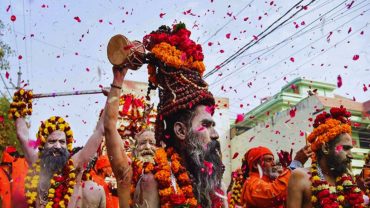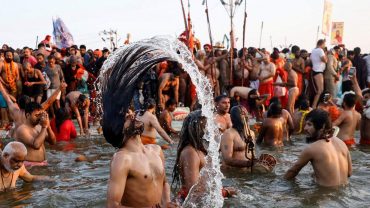Discover the fascinating world of Kumbh Mela with intriguing facts that unveil the rich tapestry of this sacred Hindu festival. Explore the history, traditions, and spiritual significance of Kumbh Mela in this insightful collection of facts, providing a deeper understanding of one of the world’s largest and most awe-inspiring gatherings. Immerse yourself in the cultural richness and profound spirituality that define this extraordinary event.
1. The Enigmatic Origin

One of the most surprising aspects of the Kumbh Mela is its origin, which dates back thousands of years. Legend has it that during a cosmic battle for the elixir of immortality, drops of the nectar fell at four riverbank locations—Prayagraj, Haridwar, Nashik, and Ujjain—where the Kumbh Mela is celebrated in rotation every 12 years.
2. The Astronomical Attendance

The Kumbh Fair is renowned for its mammoth gatherings, attracting millions of devotees. The Ardh Kumbh Mela in Prayagraj holds the record for the largest human gathering in history, with over 50 million attendees on a single day.
3. The Temporary City

During the Kumbh Mela, a sprawling temporary city emerges on the riverbanks to accommodate the influx of pilgrims. This intricate city, complete with roads, sanitation facilities, and medical centers, showcases human coordination and organization on an unparalleled scale.
4. The Environmental Impact

While the Kumbh Fair is a symbol of spirituality and devotion, its environmental impact is undeniable. The massive crowds and temporary structures raise concerns about waste management and river pollution. Efforts are being made to address these issues and make the event more sustainable.
5. The Akharas and Rituals
The Kumbh Fair is also known for its unique akharas, which are sects of ascetics and sadhus who showcase their strength and skills in various physical and spiritual feats. The holy dips in the river, known as “shahi snan,” are central to the event, and believed to cleanse devotees of their sins.
6. The Technological Advancements
Despite its ancient origins, the Kumbh Mela has embraced modern technology to enhance the experience for pilgrims. From digital crowd management to Wi-Fi zones, the event has adapted to the digital age while preserving its timeless traditions.
7. The Economic Boost
The Kumbh Mela is not just a spiritual journey; it’s also an economic boon for the host city. Local businesses thrive as pilgrims from different parts of the country and the world contribute to a surge in tourism, trade, and commerce.
8. The Cultural Showcase
Beyond its religious significance, the Mela is a melting pot of cultures, languages, and traditions. It’s a platform for various art forms, music, and literature to flourish, fostering cultural exchange and understanding.
9. The Record-Breaking Feats
The Kumbh Mela is synonymous with grandeur, and its celebrations often feature record-breaking achievements. From the largest vegetarian meal to the longest procession of elephants, these feats add to the event’s mystique.
10. The Spirit of Unity
Perhaps the most surprising and heartwarming aspect of the Kumbh Mela is the spirit of unity it embodies. Despite the diversity of attendees, the event fosters a sense of togetherness, transcending differences and reaffirming the shared human experience.
Frequently asked questions:
When did the first Kumbh Mela take place?
The origins of the Kumbh Mela can be traced back to ancient Hindu mythology, making it one of the world’s oldest and most revered gatherings.
How long does the Kumbh Mela last?
The duration of the Kumbh Mela varies depending on the location. It can range from a few weeks to a couple of months.
Is the Kumbh Mela only a religious event?
While the Kumbh Mela is deeply rooted in religious traditions, it also holds cultural, economic, and social significance.
How do organizers manage the massive crowds?
Organizers use technology, coordination, and meticulous planning to manage the immense crowds, ensuring safety and a smooth experience for attendees.
Are there any health risks associated with the Kumbh Mela?
Due to the large number of people nearby, there are concerns about the spread of diseases. Health authorities take measures to provide medical assistance and maintain hygiene.
What is the significance of the holy dips in the river?
The holy dips, or “Shahi Snan,” are believed to cleanse devotees of their sins and grant them spiritual purification.
Conclusion
The Kumbh Mela is a fascinating blend of spirituality, culture, and human endeavor. With its astonishing history, enormous gatherings, and profound rituals, it continues to capture the imagination of millions. As we reflect on the 10 surprising facts about the Kumbh Mela, we’re reminded of the event’s enduring significance and the profound impact it has on individuals, communities, and society as a whole.



Comment (0)